 |
 |
 |
| |
The Global Burden of Viremic HCV Infection
|
| |
| |
Reported by Jules Levin
AASLD 2014 Nov 7-11 Boston
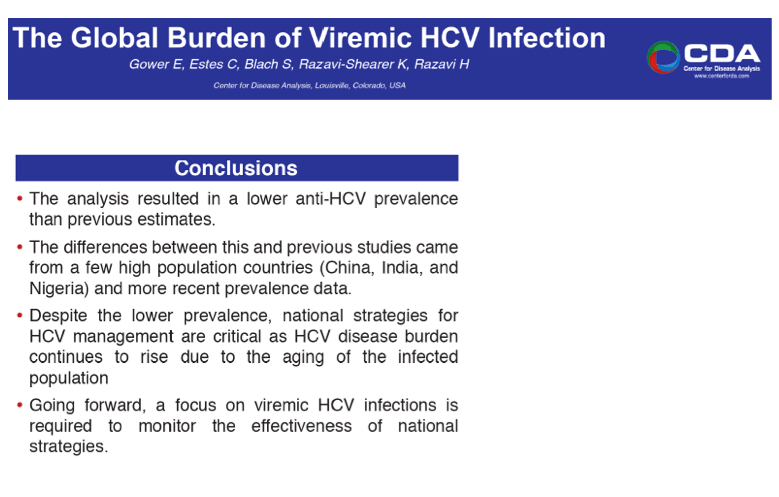
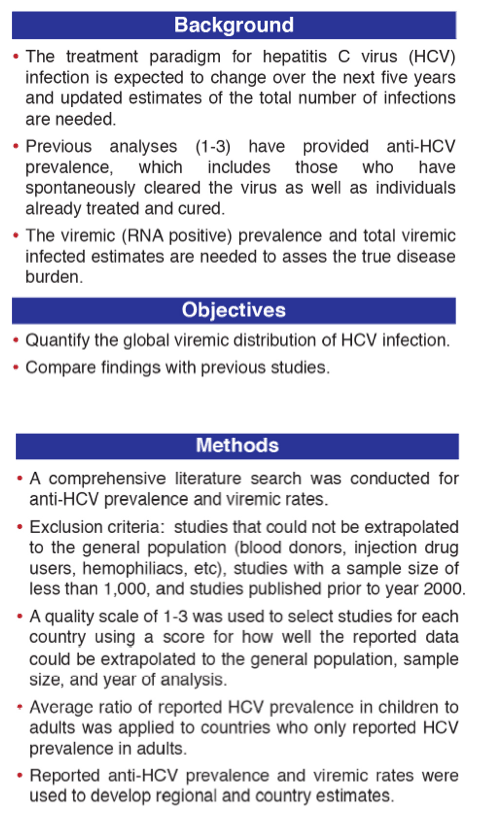
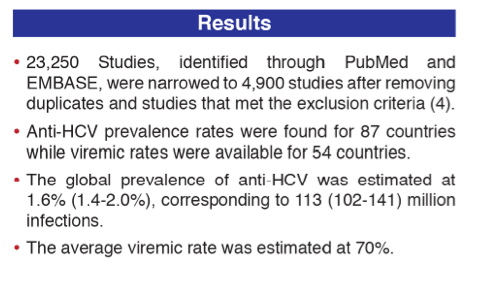
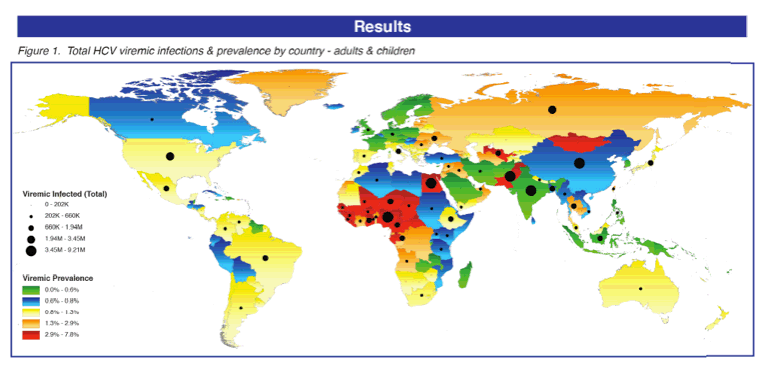
Program Abstract:
Background & Aim: The treatment paradigm for hepatitis C virus (HCV) infection is expected to change over the next five years, and recent estimates of total infections is required to develop strategies to eliminate HCV infections. This study aimed to update HCV prevalence focusing on the RNA positive (viremic) population.
Methods: A comprehensive literature search was conducted excluding studies published prior to 2000 as well as those in high-risk populations. Inclusion and scoring of studies was based on sample size, time of data collection, and representativeness of the general population. Available country estimates were used to develop regional and global estimates.
Results: The global prevalence of anti-HCV among adults (individuals aged ≥15 years) was estimated at 2.0% (1.7-2.2%), corresponding to 105 (89-118) million infections. However, viremic HCV prevalence was substantially lower (see table). Despite a moderate regional prevalence (1.1%), an estimated 45% of the global viremic population resides in Asia since this region accounts for 60% of the world's adult population. China, Pakistan and India accounted for 22.8 million infections or 67% of infections in Asia. The highest viremic prevalence was found in Africa (3.7%) with 25.7 million infections. Nigeria, Egypt, Republic of Congo and Ghana accounted for 15.6 million or 61% of the region's infections. The Americas and Europe had a similar profile. The United States, Brazil and Mexico accounted for 5.4 million (68%) of viremic infections in the Americas; while Russia, Ukraine, Italy, Romania and Spain accounted for 5.1 million (66%) of viremic infections in Europe. Australia and New Zealand accounted for 240 thousand or 92% of viremic infections in Australasia.
Discussion: This analysis shows that the total number of viremic cases worldwide is substantially lower than previous estimates. Despite the lower prevalence, national strategies for HCV management are critical as HCV disease burden continues to rise due to the aging of the infected population. Going forward, a focus on viremic HCV infections is required to monitor the effectiveness of national HCV elimination strategies.
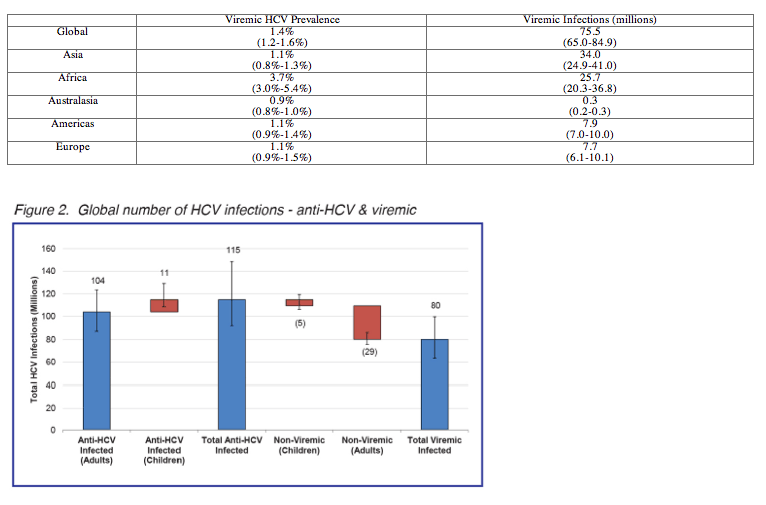
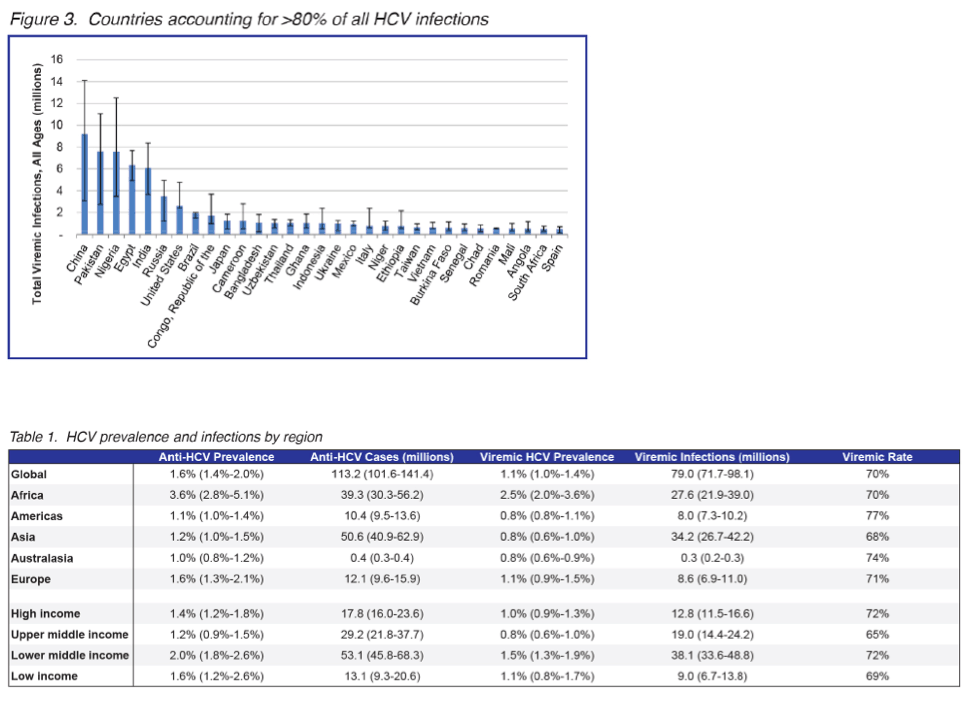
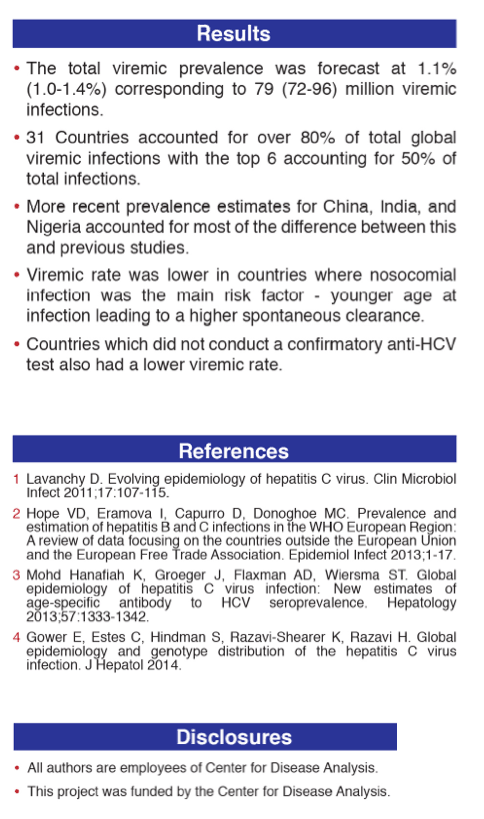
|
| |
|
 |
 |
|
|